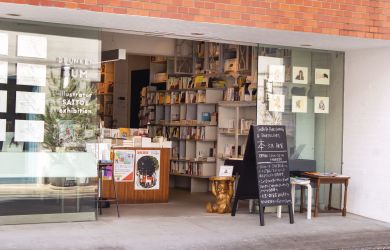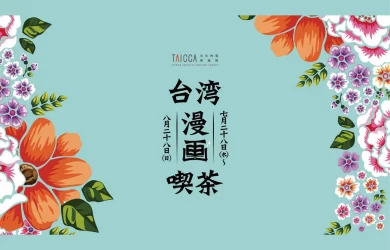
February 10, 2011
Hymn to the Lonely Man
The life of the JET teacher goes manga in Lars Martinson’s Tonoharu
By Metropolis
Originally published on metropolis.co.jp on February 2011

Illustrations: ©2010 by Lars Martinson. Used with permission.
They come wide-eyed and clueless, expecting something exotic, something mind-enhancing, something different. Quite often, they end up lonely, under-stimulated, bored, bitter, or all of the above. Such is the lot of the 1,500-odd new teachers who arrive in Japan each year as part of the government-sponsored JET Programme, to be swiftly oriented and then bundled off to schools in parts of the country where a foreign face is still sufficiently novel to be pointed at in the street.
“My friends back home can’t understand why I’d even consider quitting at the end of this year’s contract,” comments Lars Martinson’s manga alter ego in the prologue to Tonoharu, a comic book inspired by his experiences as a JET. “High pay, low stress, an abundance of free time… on paper it sounds great.” Cut to the author chugging potato chips while watching TV alone in his apartment. “But the reality of it isn’t so pristine. The devil is in the details.”
A native of Minneapolis, Martinson started Tonoharu while he was working at a school in rural Fukuoka Prefecture, where he served as an assistant English teacher from 2003 to 2006. Rather than turn the book into a straight autobiography, he took the unusual step of writing it as a prelude to his own time in Japan, choosing his predecessor at the school—whom he only met briefly—as the protagonist.
Dan Wells is a shy, introverted character, one of those wallflowers who cites his interests as sleeping and watching TV, and whose self-introductions peter out after 60 seconds. At first blush, he seems desperately dull, but over the course of two volumes Martinson gradually fleshes him out. Dan’s tryst with a coworker and his clumsy attempts to befriend a fellow American teacher are beautifully sketched. He’s hardly a poster child for the JET generation, but anyone who’s been through the scheme themselves should recognize the type.
“In my teens and 20s I was pretty introverted myself (and to a lesser degree, still am),” Martinson says. “So I suppose Dan was informed by my own personality. I don’t know if I was ever quite as socially awkward as Dan is, but I’m sympathetic to those who can’t easily connect with those around them. And life in a foreign country is a great setting to illustrate that experience.”
The story still has a way to go yet: there’s a Part Three currently in the works, with separate “Appendices” and an epilogue also promised. Just don’t hold your breath. To date, production on the comic has been proceeding at an almost torturous pace: Part One arrived in May 2008, but the following volume took until last December to appear.
This is due in large part to the intricacy of the artwork. Martinson uses a painstaking crosshatching technique that was inspired by 19th-century engravings, turning the scenery of Dan’s daily life—the drab apartment block, the railway crossing, the convenience store—into densely rendered miniatures. It looks gorgeous, like a more fastidious R. Crumb, but it also takes “way, way too long. Most panels take half a day or longer,” he says. “For some of the more elaborate drawings, it can take as long as a week.”
 The delays in production were also explained by the fact that Martinson had other things on his mind. After parting ways with the JET Programme, he secured a Monbukagakusho scholarship in 2008 to study calligraphy for two years at Shikoku University. In his original research proposal, he drew parallels between his chosen vocation and that of ukiyo-e master Katsushika Hokusai.
The delays in production were also explained by the fact that Martinson had other things on his mind. After parting ways with the JET Programme, he secured a Monbukagakusho scholarship in 2008 to study calligraphy for two years at Shikoku University. In his original research proposal, he drew parallels between his chosen vocation and that of ukiyo-e master Katsushika Hokusai.
“To my mind, East Asian calligraphy is the world’s most sophisticated line art tradition,” he says. “Its study has benefitted my inking immeasurably, making my line work more consistent and lively… Once Tonoharu is done I’m planning on altering my style to take fuller advantage of what I’ve learned.”
Martinson may not yet be at the level where, in the words of his idol, every line has “a life of its own.” But then again, even Hokusai didn’t expect to get that good until he was 110.
Now back in his native Minneapolis, Martinson has been observing from afar the debate over the future of the scheme that first brought him to Japan. “I guess with the economy being what it is, some budget cuts are probably inevitable, but I really hope they don’t gut the JET Programme,” he says. “There are aspects of it that are less than ideal, but I think its benefits outweigh the detriments.”
His advice to new arrivals? “I think one of the biggest things is to hit the ground running. Don’t be afraid to use what little Japanese you know right off the bat. Sure, you’ll make a million mistakes, have a bunch of awkward exchanges, and sound like an idiot sometimes. But accepting that early on lets you practice your language skills right away… The better able you are to communicate and understand what’s going on around you, the more profound every aspect of the experience will become.”
Maybe profound enough to write a comic about it, even.
 Tonoharu Part One and Part Two are out now (both on Pliant Press, US$19.95). For more information, see http://larsmartinson.com.
Tonoharu Part One and Part Two are out now (both on Pliant Press, US$19.95). For more information, see http://larsmartinson.com.





